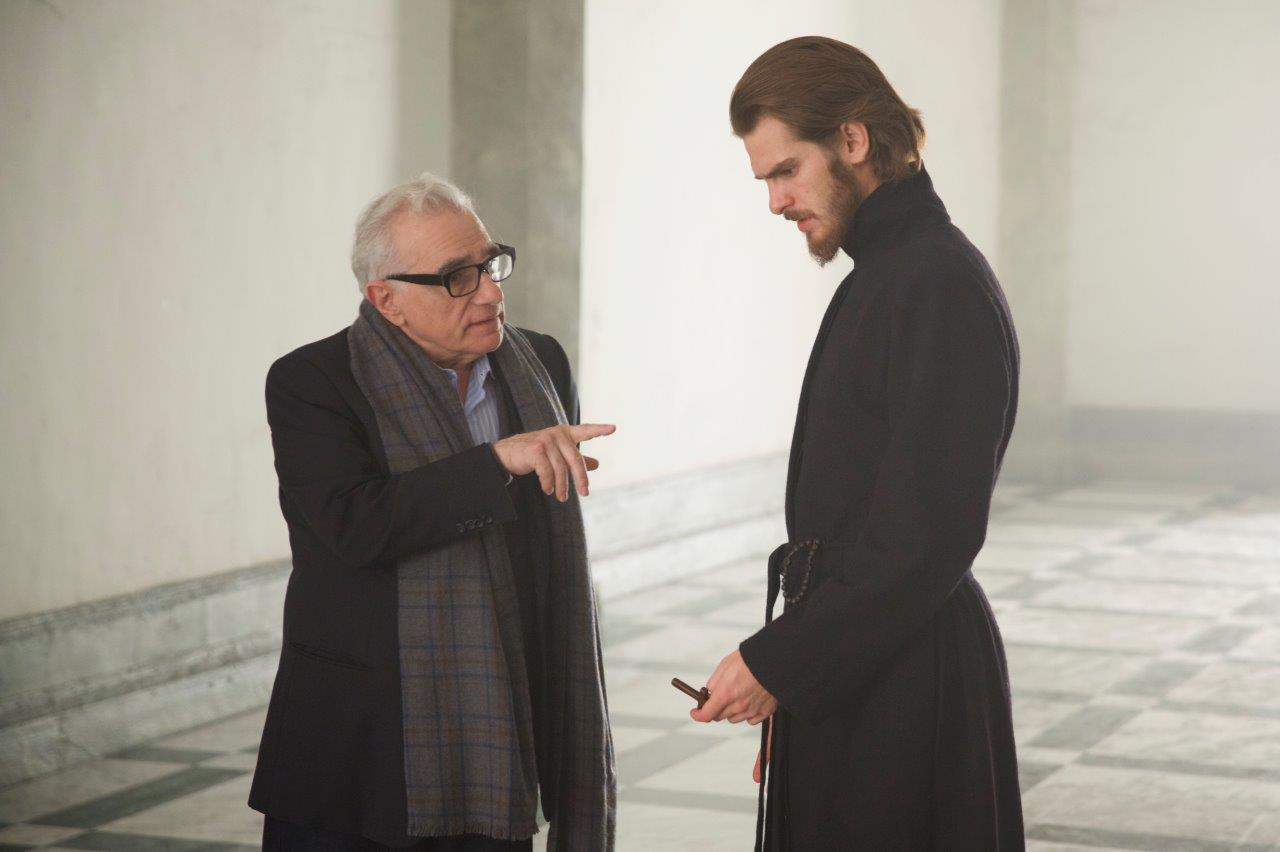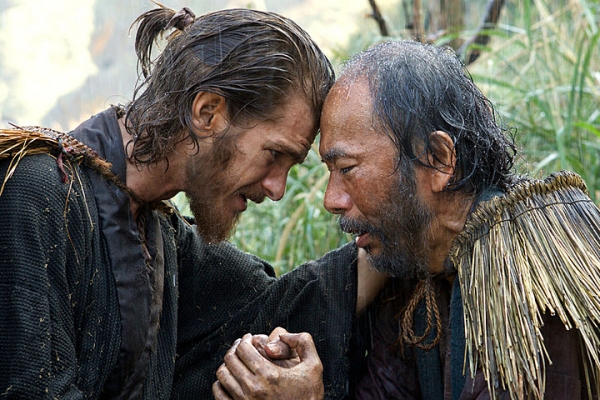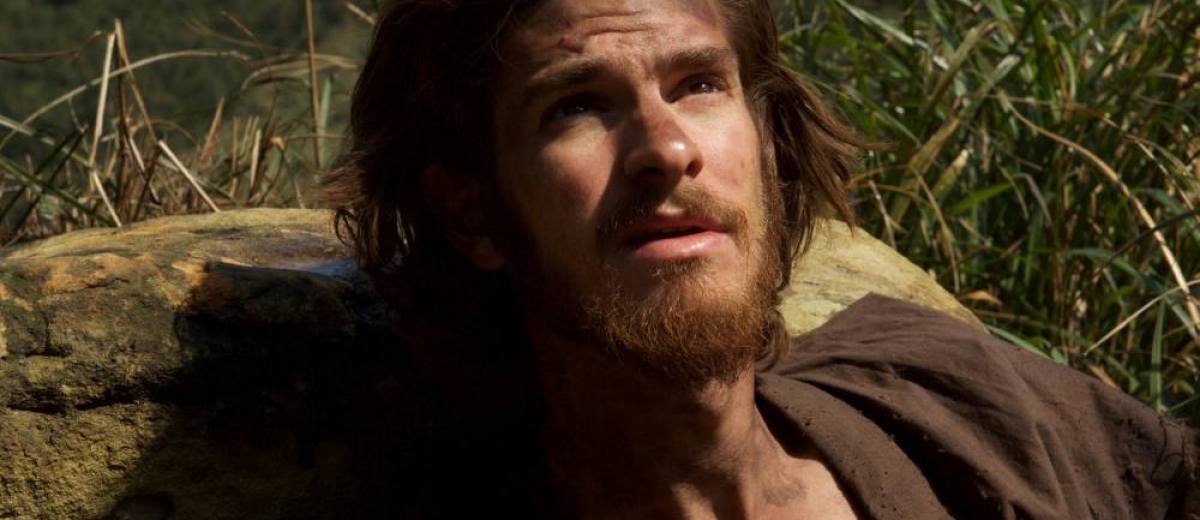
Martin Scorsese (left) directs Andrew Garfield as Father Sebastião Rodrigues in SILENCE.
Silence is the story of resilience in the face of persecution. Based on true events, director Martin Scorsese’s latest epic chronicles the tale of two Portuguese Catholic Jesuit priests, Sebastião Rodrigues (Andrew Garfield) and Francisco Garrpe (Adam Driver), as they travel to Japan in the 17th century. There, the two men of God hope to find their long lost mentor, Father Cristóvão Ferreira (Liam Neeson), and continue his work of spreading Christian to the country’s inhabitants.
What Rodrigues and Garrpe discover upon being smuggled into the island nation is nothing short of horrific. Christianity has been forbidden by law, and the Japanese have enacted brutal punishments to those caught even with Catholic iconography. The only possible means of exoneration under such circumstances is to apostatize, often symbolically by stomping on a piece of religious imagery. As Rodrigues and Garrpe clandestinely move through the villages, they continue to find their faith tested and question if their mission is boon, blessing, or curse.

Where Silence succeeds is with its cinematography, balance, and Garfield’s performance. Rodrigo Prieto (The Wolf of Wall Street, Argo) works masterfully with Scorsese to recreate what is both a hostile and pristinely beautiful world across the Japanese countryside and coasts. Unsurprisingly, Prieto and Scorsese’s use of light, angles, and attention to detail result in Silence brimming with gorgeously framed shots, even during some of the more violently difficult sequences.
Silence is a delicate narrative. While the actions of the Japanese, through their persecution which often culminated in barbaric executions, are clearly amoral to the point of being inhumane, some perspective is necessary. The law sees Christianity as dangerous ideology being pushed upon their people who may not even understand the concepts they are claiming to believe in and are willing to die for. Such devotion to an alien religion might be seen as intrusive at best and catastrophically disruptive at best. From the padres’ perspective, their word and teachings are absolute truth, therefore unequivocally justifying their proselytism. Scorsese deftly handles this collision of philosophy with the inclusion of several measured conversations between Rodrigues and the grand Inquisitor Inoue (Issey Orgata) debating the merits of the priests’ work continually using parables and metaphors to express their viewpoints.
Although billed equally in most promotional materials with Driver and Neeson, Silence is truly Garfield’s movie, and he is quite powerful. His inner struggles never cease to fascinate and feel genuine as he learns the ways of the foreign land, and must decide which battles to fight and when to compromise. His transition from binary to gray scale regarding faith is a rough journey but Garfield finds a way to keep his character sympathetic and relatable, often with a welcome brief reprieve through well-placed humor (again, attributable to Scorsese’s use of balance in the film).

While Silence presents an honest and measured account of a harrowing time for these missionaries, it suffers from needing both more and less at the same time. With a running time of two hours and 41 minutes, Silence occasionally plods along slowly with long stretches of inactivity. It could be argued that Scorsese purposefully included these moments for reflection, but patrons with weaker connections to the material may find the experience a bit tedious in places. At the same time, Scorsese appears so anxious to dive into the story, he opts not to provide ample context. The motivations of the characters often cross between superficial and arrogant, which conflicts with the passion they devote to their actions. Providing a broad historical foundation might have helped fully flesh out the weight of the story.
Silence will undoubtedly prove more polarizing to audiences than some of Scorsese’s previous works due to both material and execution, but it is still masterful in a rather unique way.
Grade: A-
Photos courtesy of Paramount Pictures